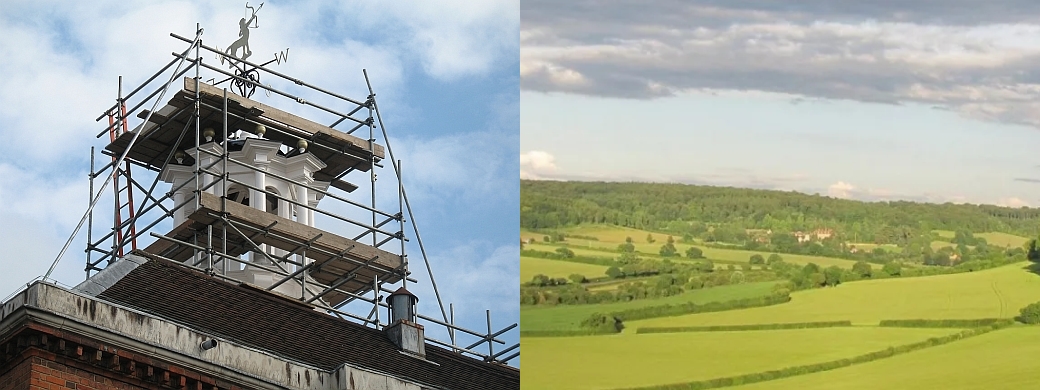
 I came across his name when I was 17, but since then I’ve never seen it again till now: in the same book I borrowed, back in 1959. Despite extensive reading in the spheres of philosophy and religion since then, I’ve never come the name since, except in the book I borrowed then.
I came across his name when I was 17, but since then I’ve never seen it again till now: in the same book I borrowed, back in 1959. Despite extensive reading in the spheres of philosophy and religion since then, I’ve never come the name since, except in the book I borrowed then.
I was a pupil in King James I Grammar School* on the Isle of Wight, first established in 1614 and still sited in the original building, as dictated by the terms of some trust fund. King Charles I had lodged there for 10 weeks while the Treaty of Newport was being negotiated in 1648. .
I attended the school from 1954 through 1960. In 1959, Paul Leyton, father of two pupils there at the time, had to leave the Island to take up a post on the mainland. As part of a decluttering process, he gave the school an impressive book collection, including a 19th-century Encyclopaedia Britannica, leatherbound and tattered. I’ve mentioned him and one of his sons in one of my rambling posts called Blessedness, which focussed on the newly-acquired house for young boarders at Swainston. In the main school, I was appointed Librarian to shelve and catalogue these books as I saw fit.
The 6th Form, in which I built the bookshelves, had been in 1660 the room where Charles I was housed for a few months before being taken for execution in London.
One of them was The Age of Analysis. I found it a difficult read but it opened my mind to many exciting ideas. I remember being especially drawn to the words of Santayana, but not why. Not till now, having got my own copy. It reproduces a chapter from his Life of Reason. I’ve tried to summarise its content (but haven’t got very far). It’s in 9 sections with headings as follows:
-
- Religion certainly significant.
- But not literally true.
- All religion is positive and particular.
- It aims at the Life of Reason.
- But largely fails to attain it.
- Its approach is imaginative.
- When its poetic method is denied its value is jeopardised.
- It precedes science rather than hinders it.
- It is merely symbolic and profoundly human.
Under (1) he says “What they [heretics and atheists] rebel against is a religion alien to their nature … but they yearn mightily for a word interpreted in their own fashion.” At which point I should add that Santayana called himself an atheist Catholic.
Under (2) he calls attention to “conceptions … which have drifted down the muddy stream of time, where tradition and passion have jumbled everything together”, and says it would be pitiful if we cannot do better.
Under (3) he explains that religion cannot be formless, just as it’s impossible “to speak without speaking any particular language.” It must be positive: “every living and healthy religion has a marked idiosyncrasy.
The vistas it opens and the mysteries it propounds are another world to live in … [this] is what we mean by having a religion.
At which point I’m prompted to say “Please take me there! I’m feeling the need to live in such a world as never before. I can’t rely on occasional visitations from the angels.” So I want to move on, see if Santayana has an answer.
Under (4) he makes clear that religion and reason are interdependent.
Religion makes absolute moral decisions. It sanctions, unifies, and transforms ethics.
It’s time I gave up trying to condense and paraphrase the words of George Santayana. You can download The Life of Reason in its entirety, via Project Gutenberg.

Dear Ian,
This a quote from Santayana in a book of pictures and quatations by Sylvia Shaw Judson, a Quaker sculptor. From ‘The Quiet Eye’:
‘It is not wisdom to be only wise
And on inward vision close the eyes.’
I first learned of Santayana through an essay in a college textbook. His short essay was titled ‘On Leaving Church.’ It made me think.
Santayana https://melhorsemusicasclassicas.blogspot.com/2024/03/santayana.html
Larry made the comment, then scratched thru it.
A Grateful Friend, ellie
LikeLike